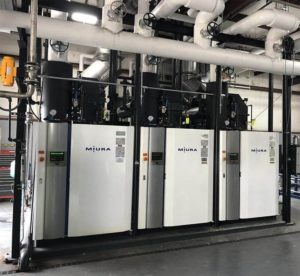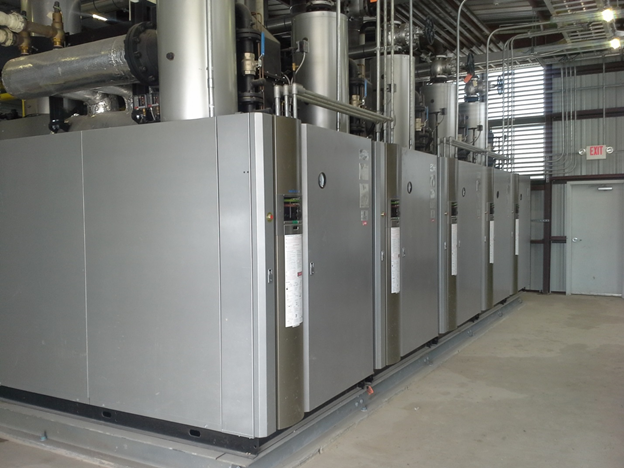MOST COMMON STEAM BOILER TYPES
From steam engines to home heating systems to hot water heaters, people have been using boiler systems to provide steam heating and hot water for centuries. At first glance, it may seem like all steam boilers are more or less the same — but the fact is that steam systems can be quite different from one another. Some boilers run on natural gas, while others use heating oil or propane. There are both high pressure and low-pressure boilers, and there are some that can do either. Boiler systems may operate with differing minimum water levels and at different levels of energy efficiency.
BREAKING DOWN STEAM BOILER TYPES

There are several general types of boilers with varying qualities and differing boiler designs to serve different purposes. Before you can have an idea of which boiler is right for your facility, you should become acquainted with several of the more common types of steam boilers.
FIRE TUBE BOILER
The most common type of boiler system especially for industrial uses, fire tube boilers, has been around for a long time because of their ability to meet steam needs when the demand is large and constant. These pressure vessels are filled with water, and the fuel used to heat the water is kept inside a series of tubes. The key to a fire tube boiler is having the boiler, burner, and control scheme all working in conjunction with one another to produce the steam and pump it where it needs to go. They are common for any steam or hot water application that requires between 15 and 2,200 horsepower.
While extremely common, fire tube boilers are not without their downsides. They are designed to heat large amounts of water at once, so it may take several hours after startup before the proper steam pressure is reached. This boiler design can be cumbersome and expensive for industries that require steam only at certain times of day, not to mention the non-productive time required for fire up and blowdown. The feedwater for these boilers typically consists of a mix of returned steam condensate and the natural water source, which can cause mineral buildup and clogs even with frequent water treatment. Finally, there is a constant risk of overheating and excessive steam pressure, which has been known to cause dangerous explosions in systems that are old or not well maintained.
Biomass fired reciprocating grate steam boiler
WATER TUBE BOILER
Water-tube boilers are becoming increasingly popular as they are probably the most versatile type of boiler system. With this type of boiler, the water runs through a series of tubes that connect the lower mud drum at the bottom of the boiler to the steam drum at the top. When the boiler is running, combustion gases flow around the tubes, heating up the water inside and producing steam.
This type of boiler is best utilized when facilities need large amounts of steam, usually tens of thousands of pounds per steam every hour. Water-tube boilers can be especially useful because they’re able to produce steam on-demand with little delay between turning the boiler on and producing steam. They also have a lower water content than some other types of boilers, which helps make them more responsive to changing steam demand, not to mention inherently safer and more cost-efficient.
specializes in manufacturing water tube steam systems, and we have perfected our design by creating boilers with a compact, modular design, and advanced self-monitoring capabilities. Not only does this allow businesses the advantage of steam on demand, but multiple boilers can be configured to fire up and power down as needed.
Electric Boiler

Compared to both the water tube and fire tube boilers, electric boilers are much smaller and quieter. The biggest difference between electric and other boilers is that they have no exhaust stack and they don’t use fossil fuels like oil or natural gas, basically eliminating emissions of NOx or other types of greenhouse gases.
This makes electric boilers vital for areas that have tight emission restrictions for these types of pollutants. The catch is that they are only worthwhile when the cost of electricity is reasonable; otherwise, they can be expensive to operate, and some of the convenience they provide may not be worthwhile.
Condensing Boiler
Condensing boilers can be the most efficient type of boiler, often achieving a fuel-to-steam efficiency rate of up to 99 percent. These boilers recover part of the latent heat from unused water vapor that is wasted by other types of boilers by returning it to combine with the boiler water. As long as the temperature of the return water is less than 110 degrees, it’ll be useful for a condensing boiler. The cooler the return water, the more efficient the condensing boiler will be, sometimes reaching up to 98% efficiency, which is significantly higher than both water tube and fire tube boilers.


